|
|||
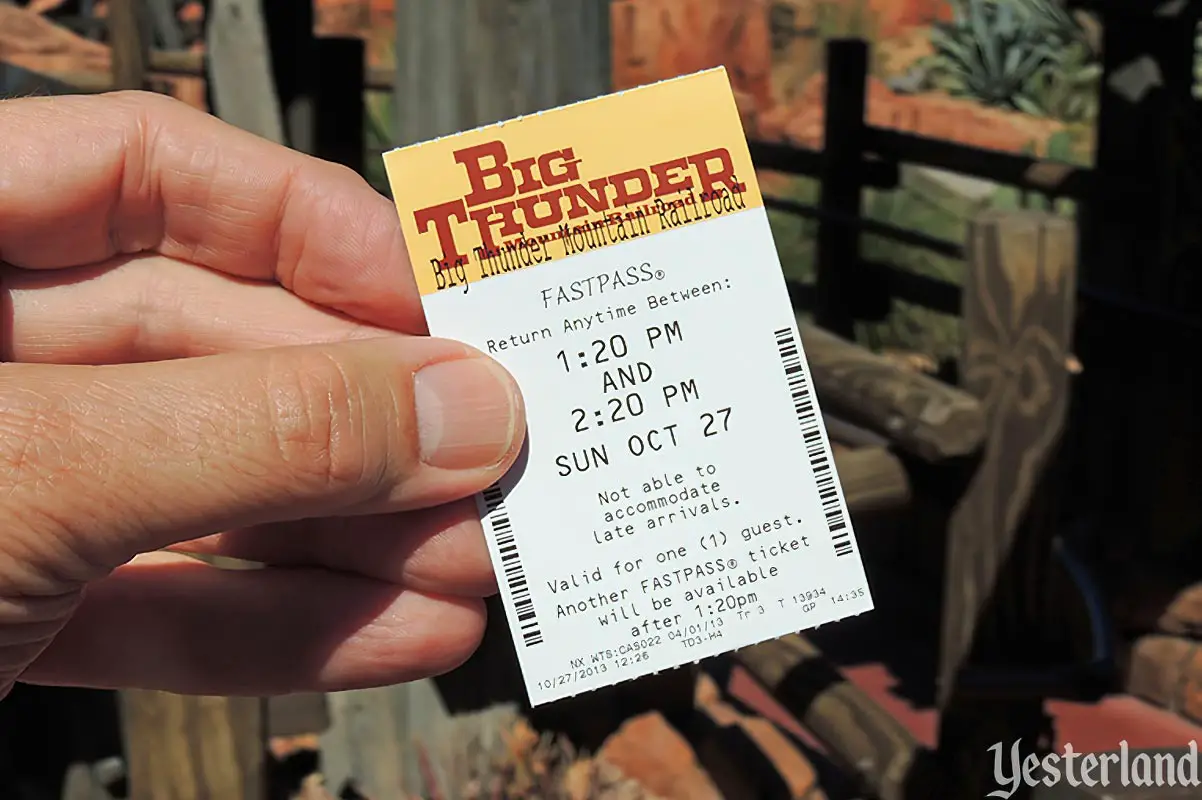
Photo by Werner Weiss, 2013 |
|||
|
|
|||
|
Gone, but not forgotten… |
|||
|
|
OBITUARY Paper FASTPASS Distribution. Born at Walt Disney World, July 1999. Died at Walt Disney World, January 2014. Beloved by park guests as a way to limit time waiting in lines. Survived by its offspring—My Disney Experience Website, My Disney Experience App, FastPass+ Kiosks, FastPass+ on MagicBands, FastPass+ on Ticket Cards, and Standby Lines—and by its siblings—FASTPASS and MAXPASS at Disneyland Park and Disney California Adventure, and similar options at international Disney Theme Parks. Services will be in increasingly later one-hour time slots, until completely gone for the day. |
||
|
That’s how an obituary for Paper FASTPASS Distribution might have read in 2014. By 2022, many of the survivors had also met their demise. FASTPASS fundamentally changed how guests dealt with popular attractions at Disney theme parks. |
|||
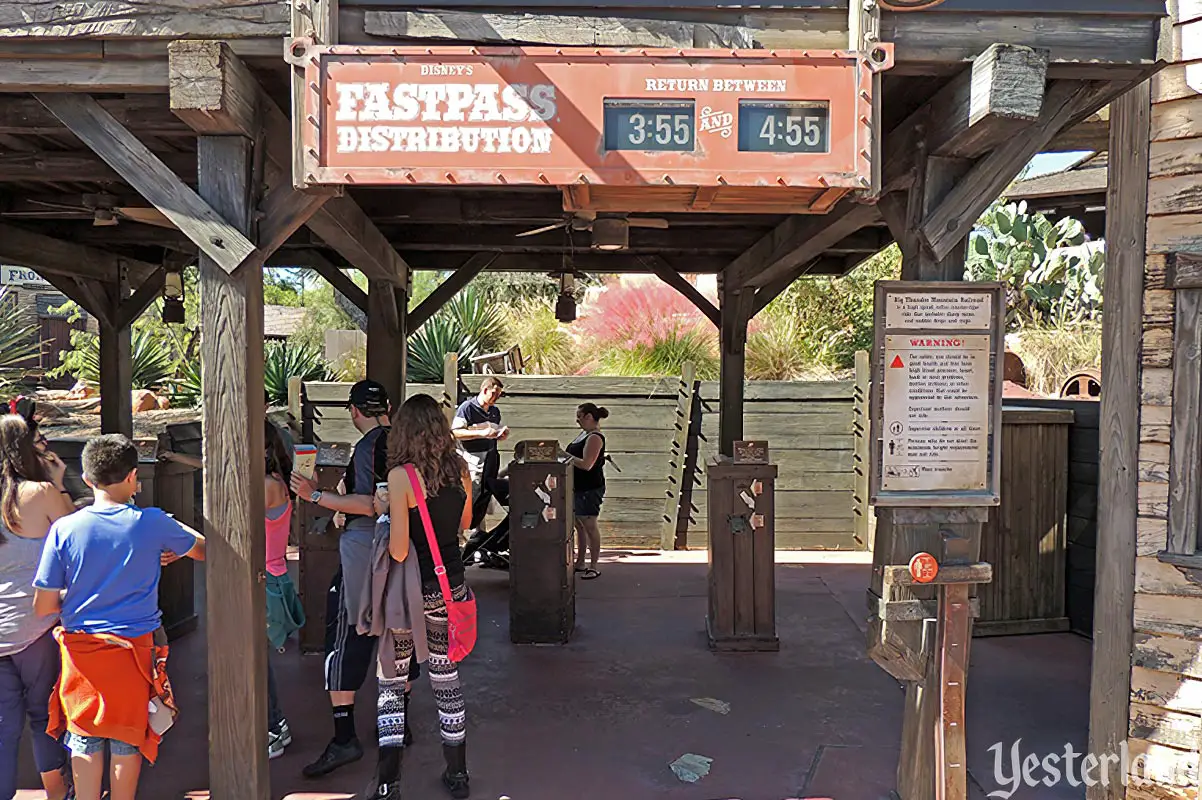
Photo by Werner Weiss, 2013 Big Thunder Mountain Railroad FASTPASS distribution |
|||
|
Having noted the death of Paper FASTPASS Distribution, let’s go back to its birth in 1999. Here’s how the Orlando Sentinel shared the news (“Ride Reservations Coming to Disney,” by Charlene Oldham, July 9, 1999): Tired of waiting in long lines at theme parks? Walt Disney World says take a number. Within the next week, a new ride-reservation system will be offered at Kilimanjaro Safaris, Countdown to Extinction and Kali River Rapids at Animal Kingdom. By the end of the month, FASTPASS could also be available at other popular rides, such as Space Mountain and Splash Mountain in Magic Kingdom or the Rock ’n’ Roller Coaster—set to open soon at Disney- MGM Studios, Disney spokesman Dan Higgins said. “And this is something we could roll out at Disney attractions around the world,” said Higgins, who added that Disneyland is testing a system. For now, though, Walt Disney World is the only U.S. theme park using a line-reservation system, which Higgins said should be easy for visitors to use. Disneyland officially launched its own FASTPASS implementation November 19, 1999, at “it’s a small world” Holiday, after having run tests with summer crowds at Space Mountain. |
|||
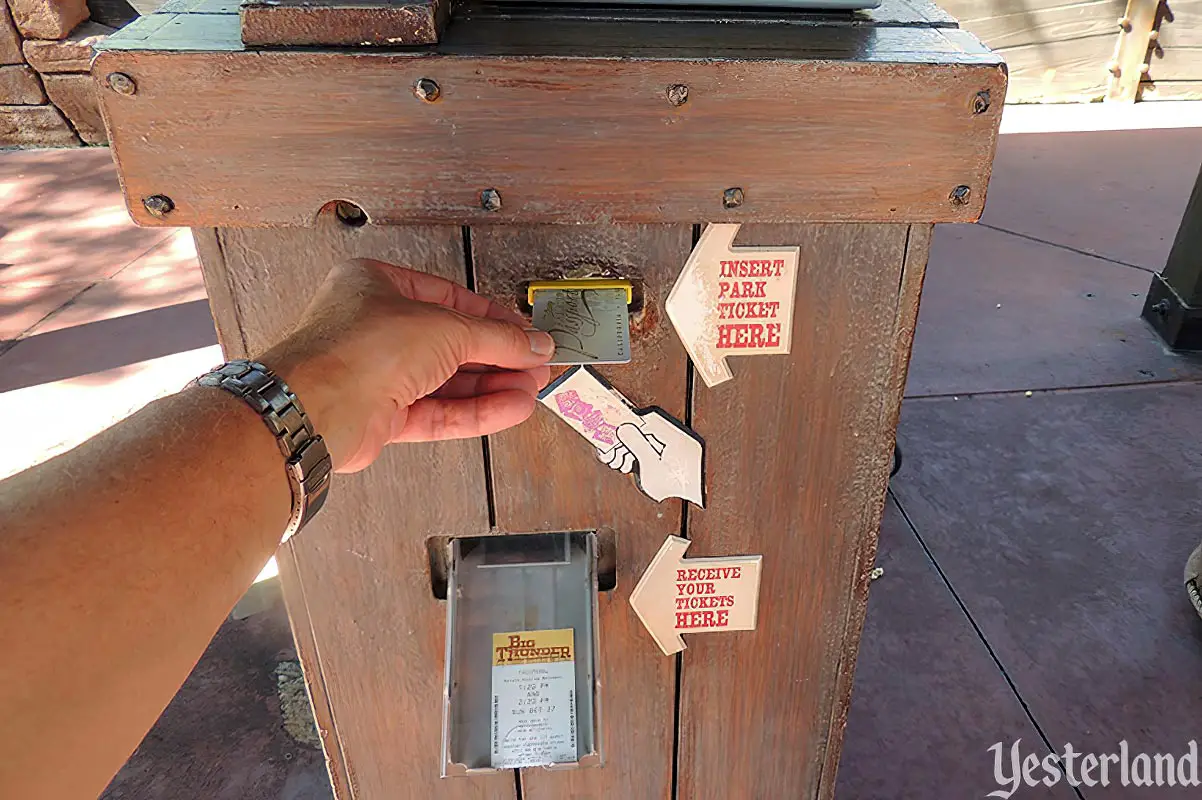
Photo by Werner Weiss, 2013 Inserting park admission |
|||
|
The official Walt Disney World website had these instructions in 2001: How it works Just slide your regular Park ticket through the turnstiles at participating attractions. Your free Disney’s FASTPASS® ticket will be imprinted with a designated ride time. Now you’re free to go enjoy the rest of the Park. When your ride time rolls around, come back to the FASTPASS entrance and hop on board with no further wait. What could be easier? At a high level, that was how it worked. But there was more to it then that. For example, after getting a FASTPASS, a guest had to wait two hours or until the beginning of the FASTPASS return time (whichever was sooner) before being able to get another. |
|||
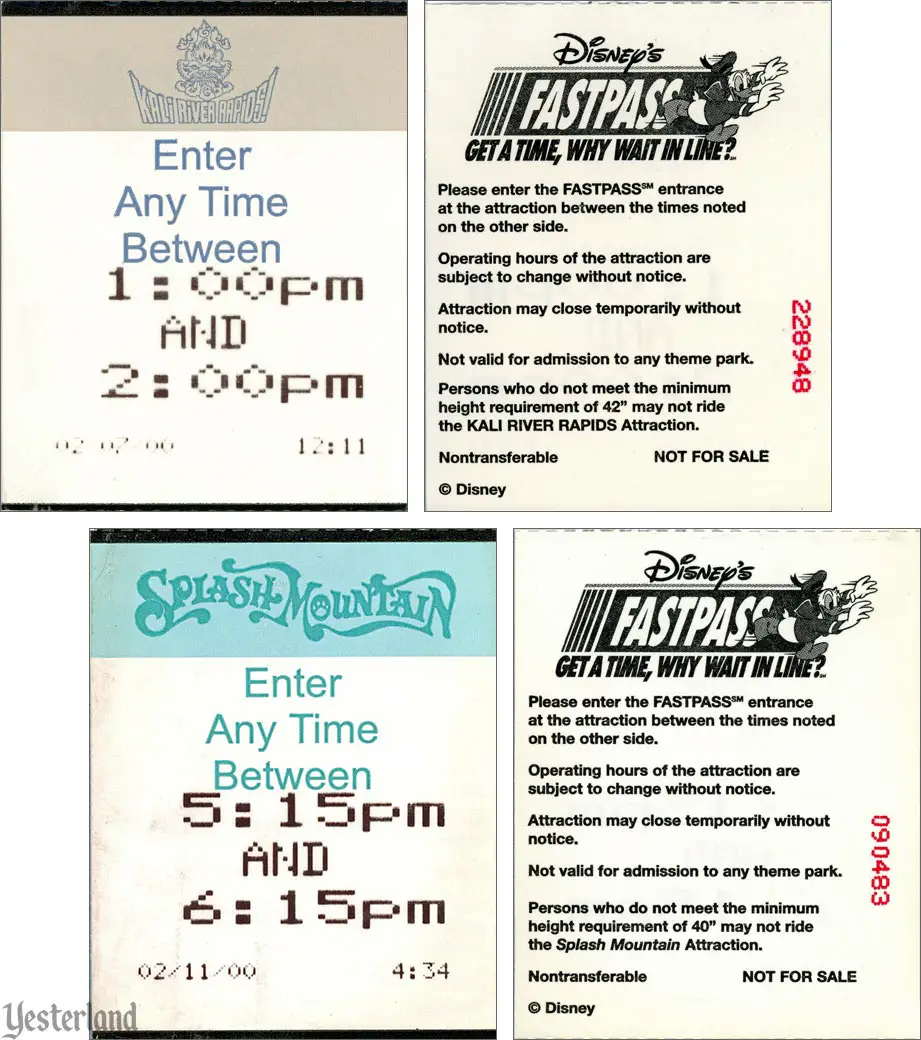
Tickets © Disney / from the collection on Chris Bales FASTPASS tickets (front and back), as they looked in 2000 |
|||
|
There were all sorts of ways to game the system. Websites disclosed which FASTPASS terminals were off-network, allowing guests to get a FASTPASS elsewhere immediately. Initially, FASTPASS machines would accept old, used-up tickets that had not been used for park admission that day. Early FASTPASS users even reported success using other magnetic stripe cards, such as credit cards. Not surprisingly, most loopholes were soon fixed. |
|||
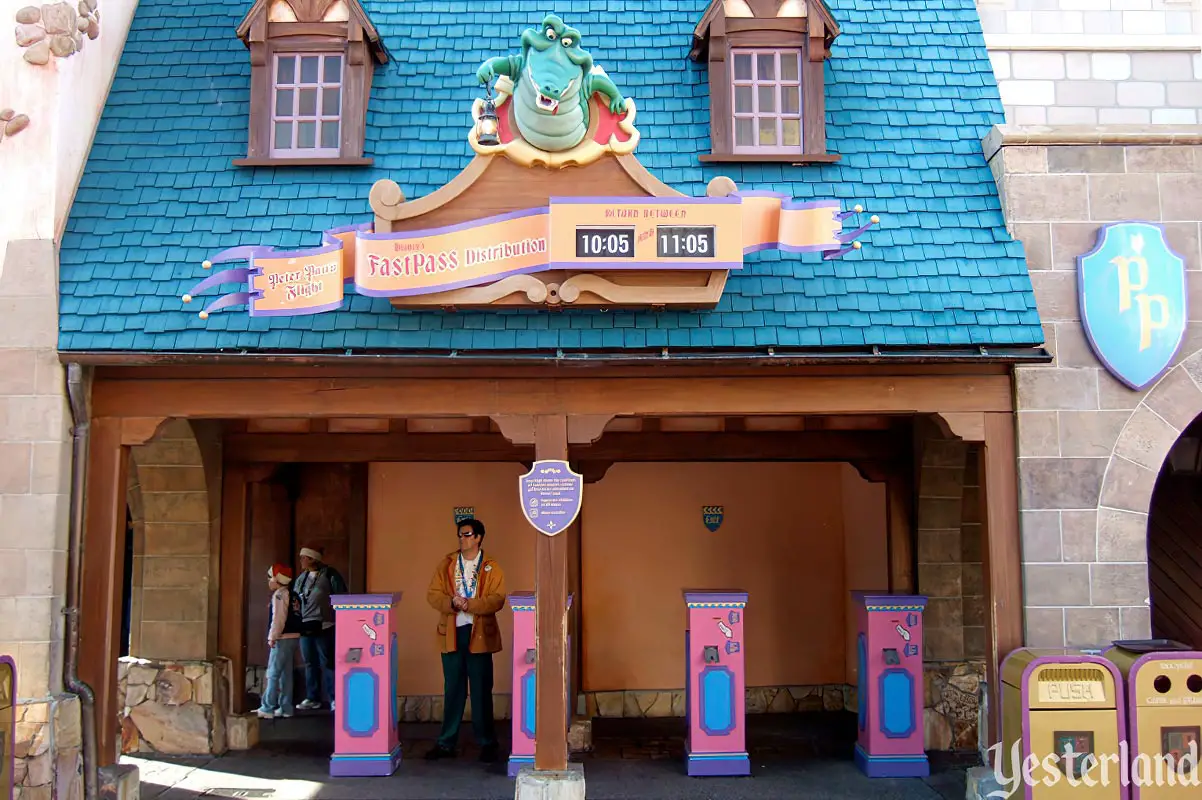
Photo by Allen Huffman, 2006 Peter Pan’s Flight distribution |
|||
|
But the biggest loophole lasted almost as long as the original FASTPASS system. Each FASTPASS (except those for stage shows) had a one-hour return window. The start time was strictly enforced. But the end time was not enforced at all. Cast Members would not blink an eye when guests presented FASTPASS tickets whose end times had passed hours ago. Effectively, a FASTPASS for 11:20 a.m. to 12:20 p.m. worked as a FASTPASS for 11:20 a.m. to park closing. Knowledgeable guests learned to collect high-demand FASTPASS tickets in the morning and to use them during periods of peak crowds later in the day. End time enforcement finally began March 7, 2012. |
|||
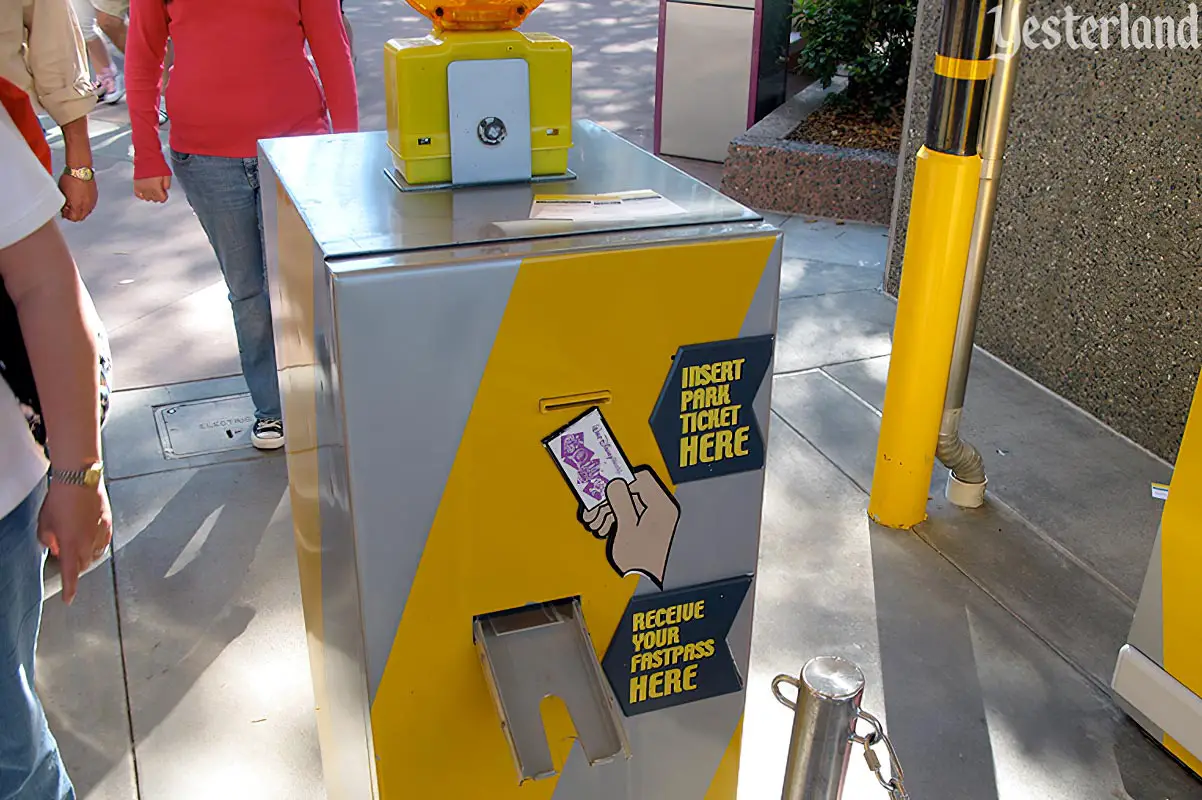
Photo by Werner Weiss, 2009 Test Track distribution |
|||
|
The biggest benefit of FASTPASS went to “obsessive planners” who took the time to understand the system thoroughly. It also helped regular guests who figured out the basics. But then there were guests who waited in long, slow standby lines while FASTPASS guests raced by them—because they failed to understand that they were also eligible for FASTPASS. Critics of FASTPASS pointed out that the system did nothing to increase a park’s capacity. An attraction with a capacity of a thousand guests per hour still had that capacity. FASTPASS guests would be deprived of detailed queues, while standby guests would move through them too slowly. A prime example was the original Test Track. FASTPASS guests missed all the automotive test displays that set the stage for the ride, while standby guests spent too much time in front of each of them. |
|||

Photo by Werner Weiss, 2013 At Rock ’n’ Roller Coaster Starring Aerosmith |
|||
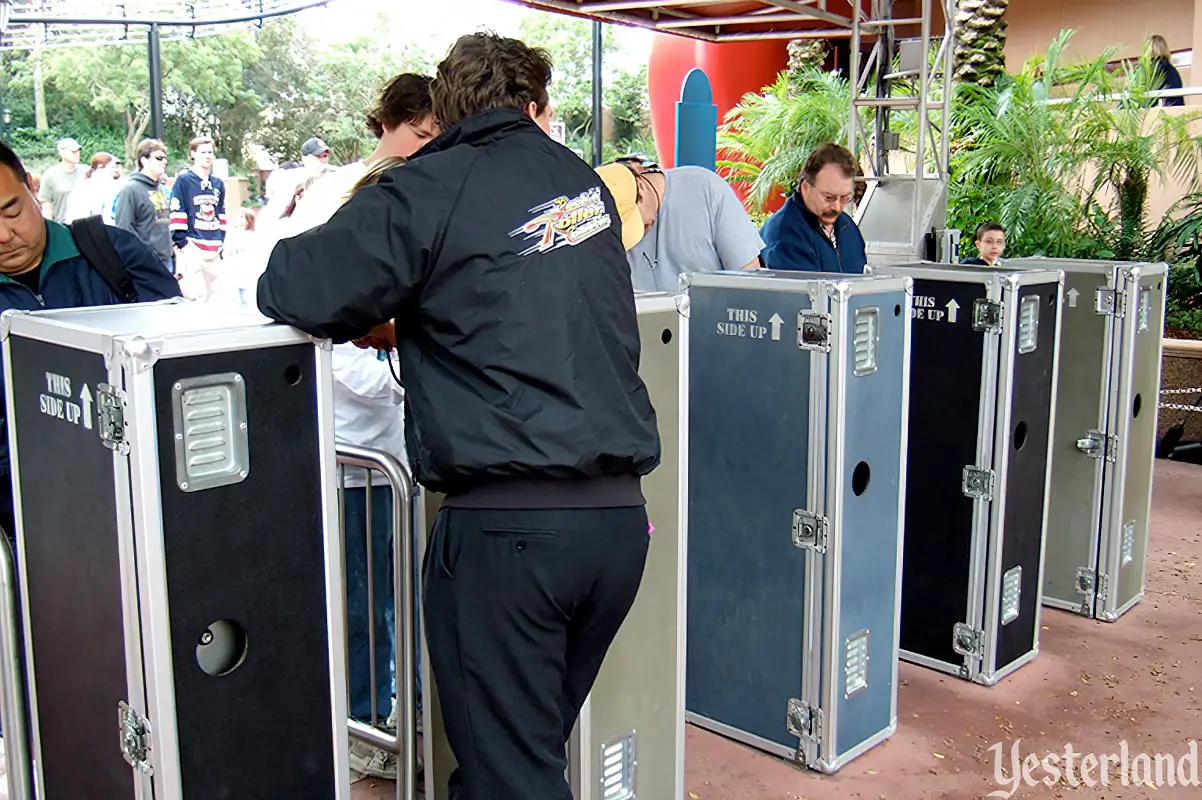
Photo by Allen Huffman, 2006 Themed as band equipment cases |
|||
|
Imagineers designed each FASTPASS distribution area to go with the theme of the attraction it served. The terminals could resemble crates, trunks, equipment cases, toy boxes, or whatever contributed to the story of the attraction. |
|||
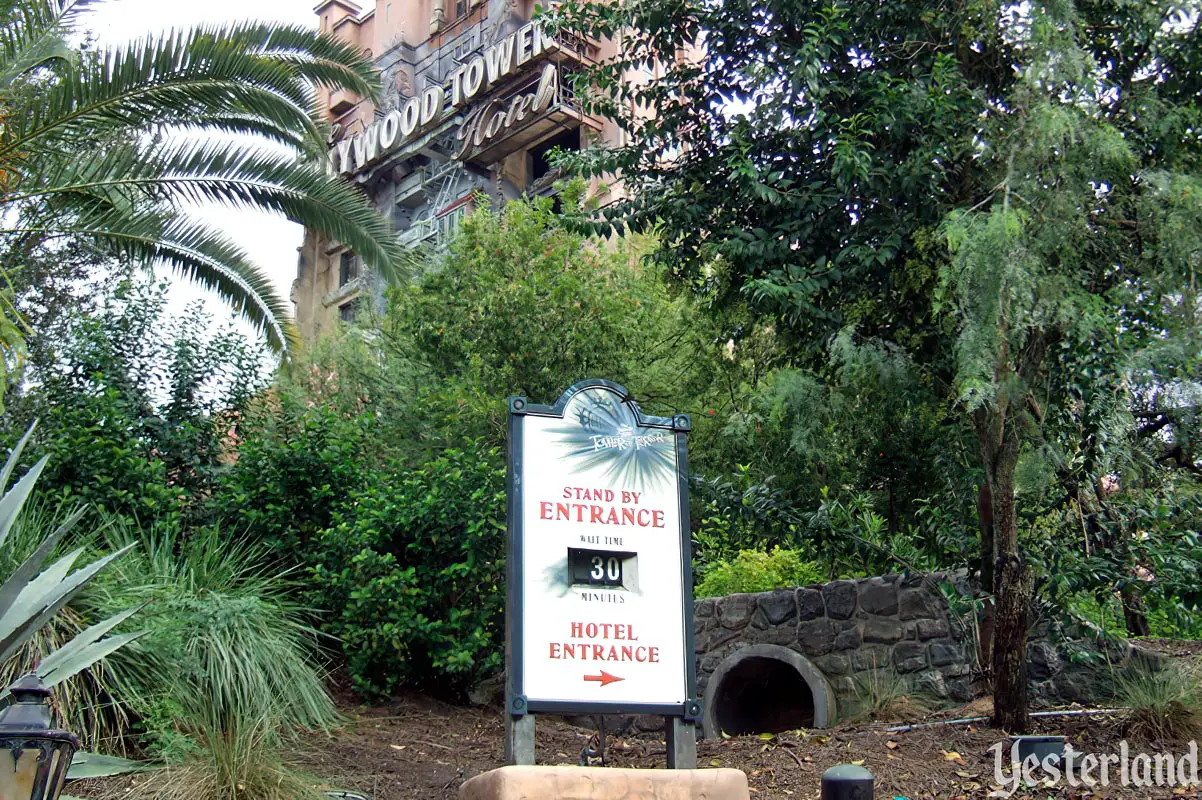
Photo by Allen Huffman, 2007 The Twilight Zone Tower of Terror wait time |
|||
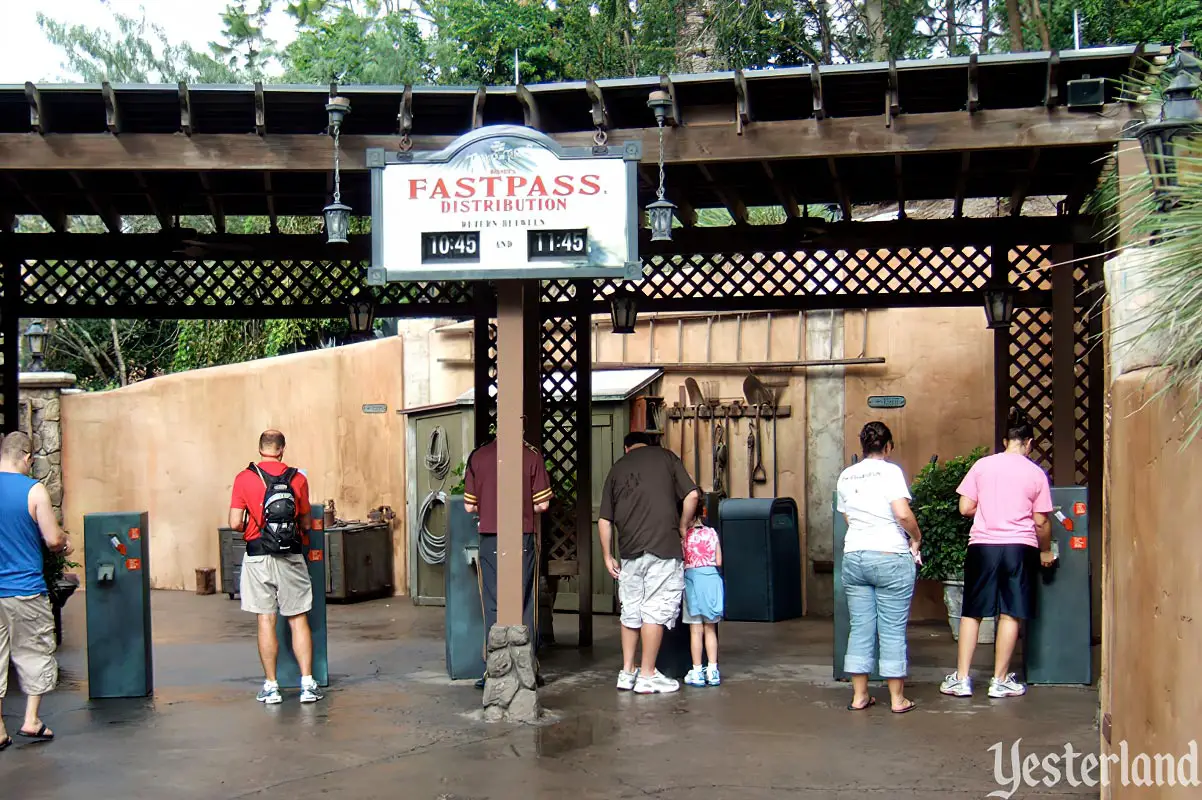
Photo by Allen Huffman, 2007 The Twilight Zone Tower of Terror distribution |
|||
|
To get a FASTPASS or not to get a FASTPASS? That was the question when standby times were reasonable. For repeatable thrill rides, the answer was often to get a FASTPASS for later and to get in the standby line right away. Because FASTPASS distribution was usually near the attraction entrance, it was easy to make spontaneous choices. |
|||
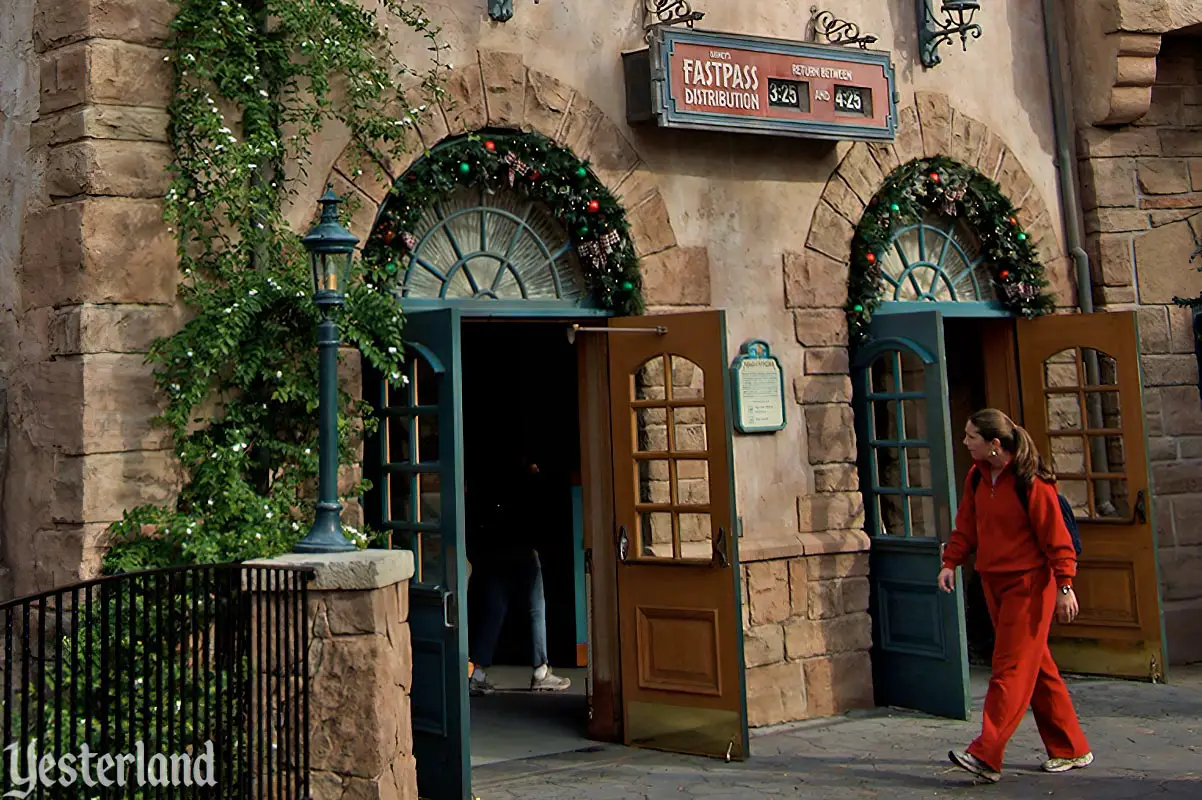
Photo by Allen Huffman, 2006 Maelstrom entrance |
|||
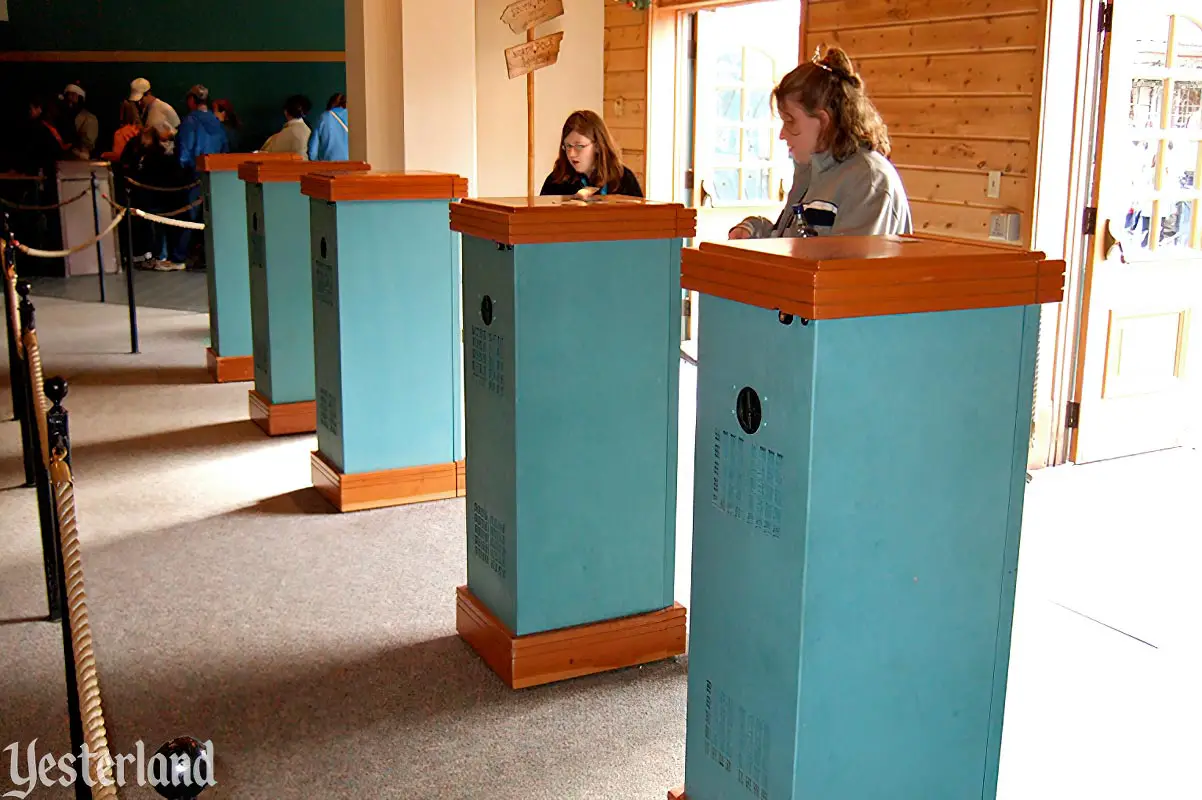
Photo by Allen Huffman, 2006 Maelstrom distribution |
|||
|
Sometimes, a not-so-repeatable attraction (such as Maelstrom) would offer FASTPASS for 30 minutes later, while having a standby wait time of only ten minutes or so. It would waste more time to get a FASTPASS and kill 30 minutes than simply to use the standby line. |
|||
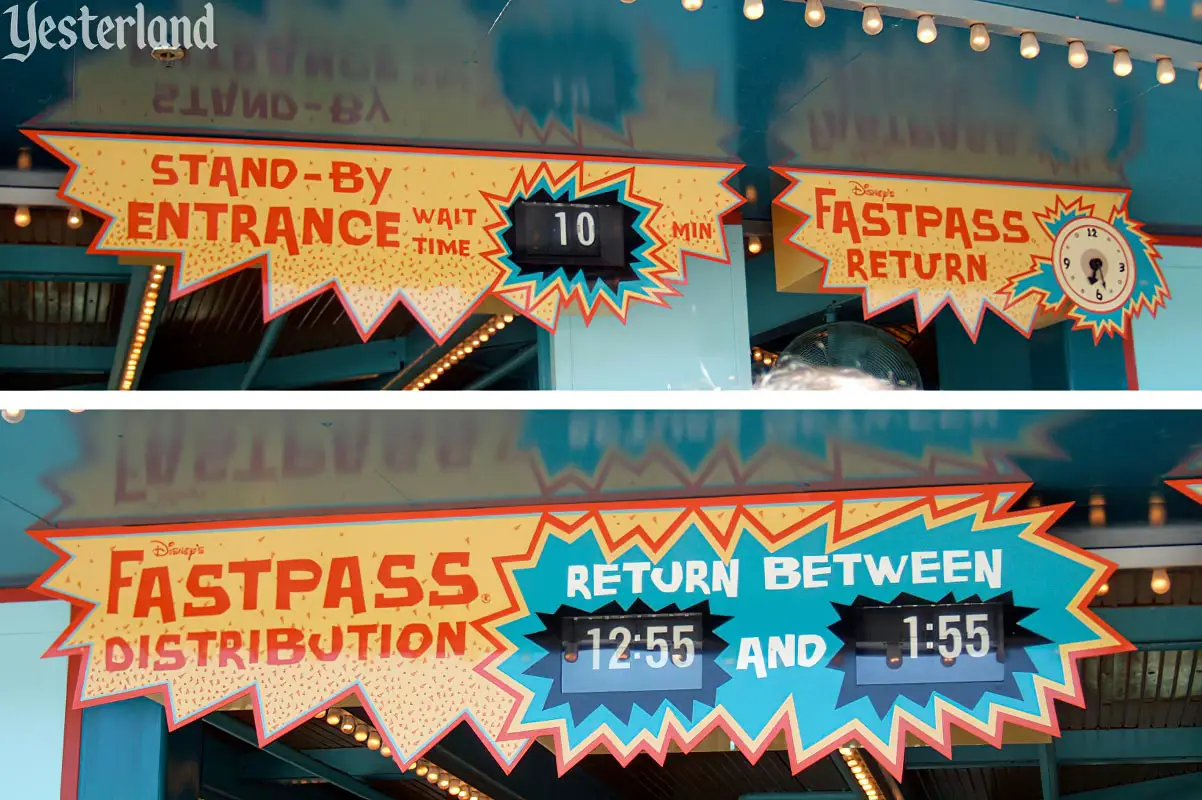
Photos by Allen Huffman, 2007 Primeval Whirl distribution |
|||
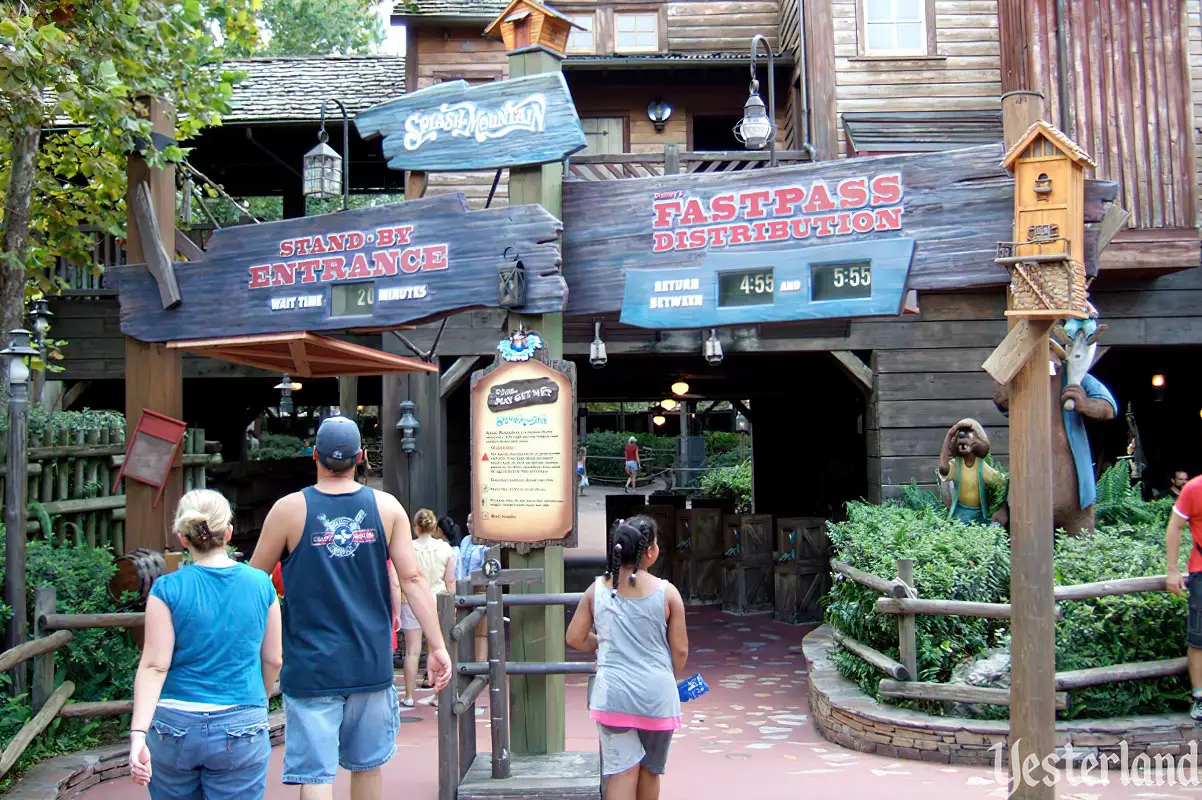
Photo by Allen Huffman, 2007 Splash Mountain distribution |
|||
|
Of course, standby wait times are a function of crowd levels and weather. On a hot, busy summer day, Splash Mountain can have a 120-minute wait. On a cold winter day when kids are in school, it’s a different story. |
|||

Photo by Werner Weiss, 2010 FASTPASS where it’s not really needed |
|||
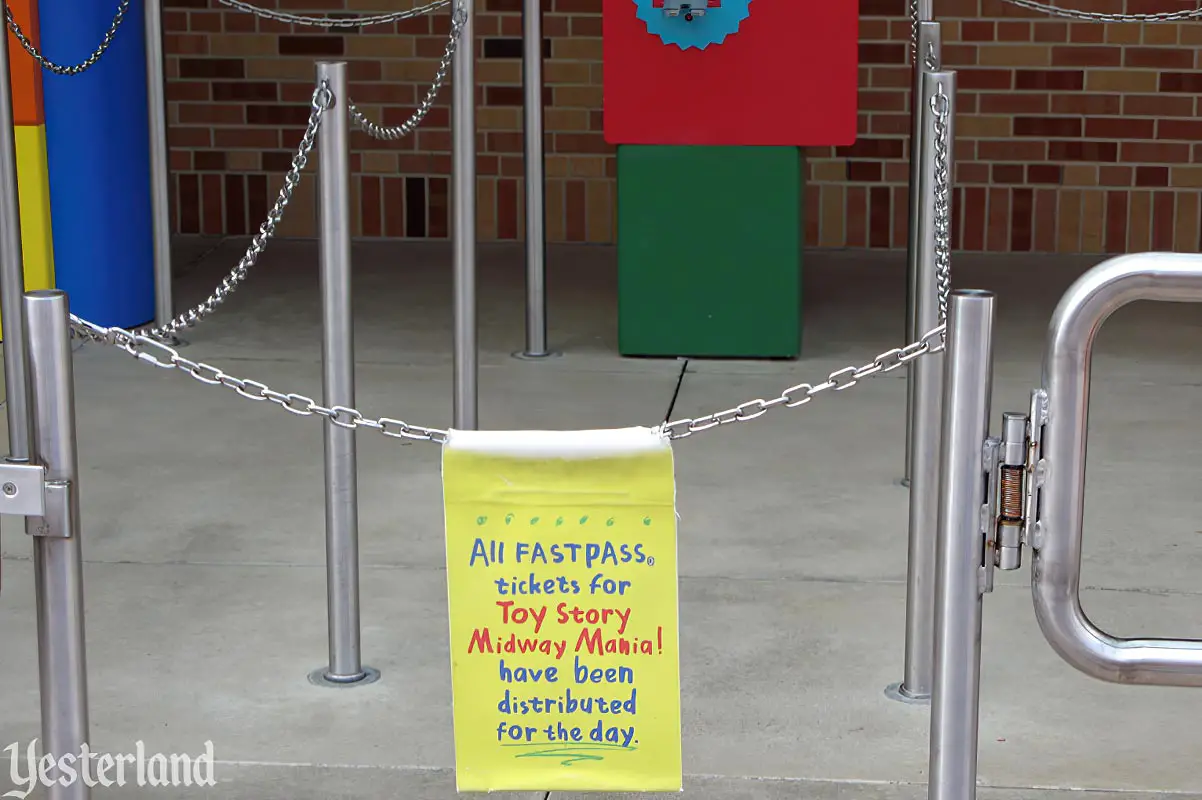
Photo by Werner Weiss, 2009 FASTPASS where demand greatly exceeds supply |
|||
|
Guests at Disney’s Hollywood Studios would grab all FASTPASS tickets for Toy Story Midway Mania in the morning, leading to disappointment and a long, slow standby line the rest of the day. In contrast, Toy Story Midway Mania at Disney California Adventure did not have FASTPASS until April 2017. Until then, guests could arrive any time and get in line for 40 minutes or so. Was it better with or without FASTPASS? The answer depended on whom you asked. |
|||

Photo by Allen Huffman, 2006 Essentially no wait for Kali River Rapids |
|||

Photo by Allen Huffman, 2006 No FASTPASS for Kali River Rapids |
|||
|
There was another reason why guests would be unable to get a FASTPASS. When a standby line takes less time than a typical FASTPASS line, there was no reason to waste money on staffing FASTPASS or even on the paper tickets. |
|||
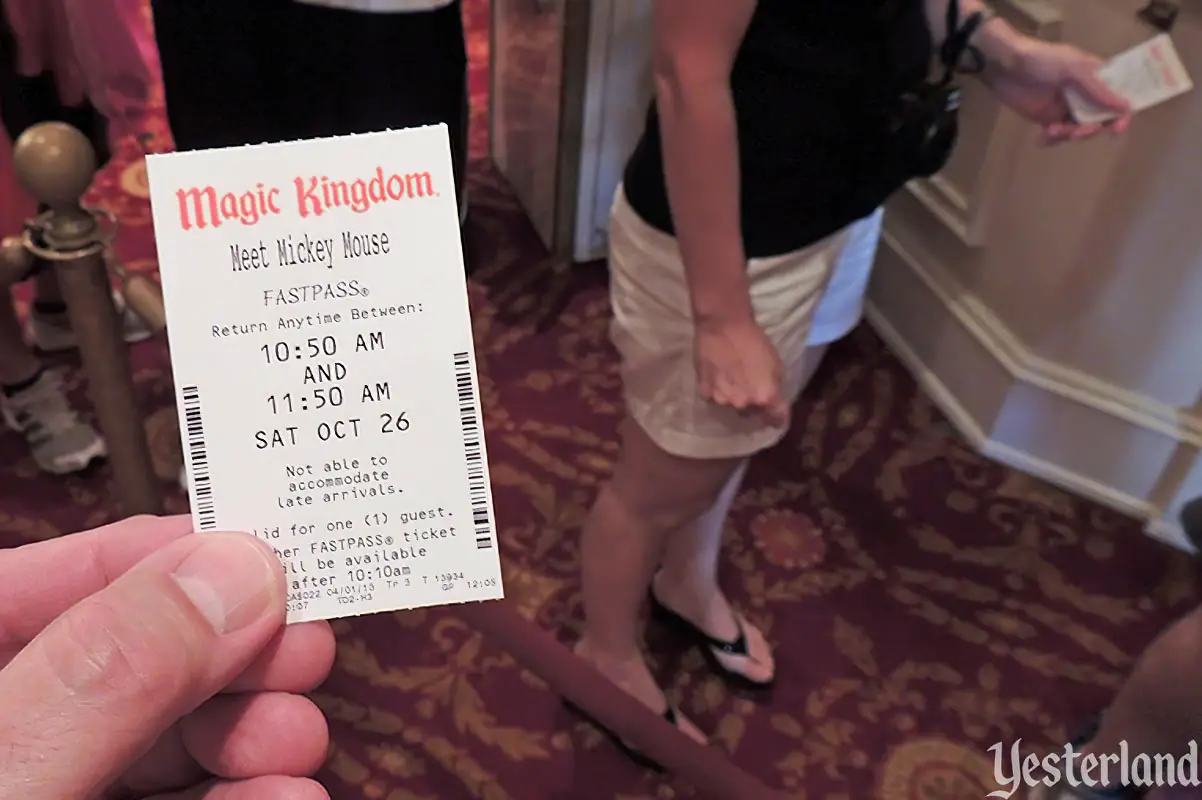
Photo by Werner Weiss, 2013 Mickey Mouse FASTPASS |
|||
|
Although FASTPASS was designed for rides, it later became a way to schedule character visits. It’s better than waiting an hour in line. But it’s also sad that character interaction is no longer the casual, spontaneous activity it once was. |
|||
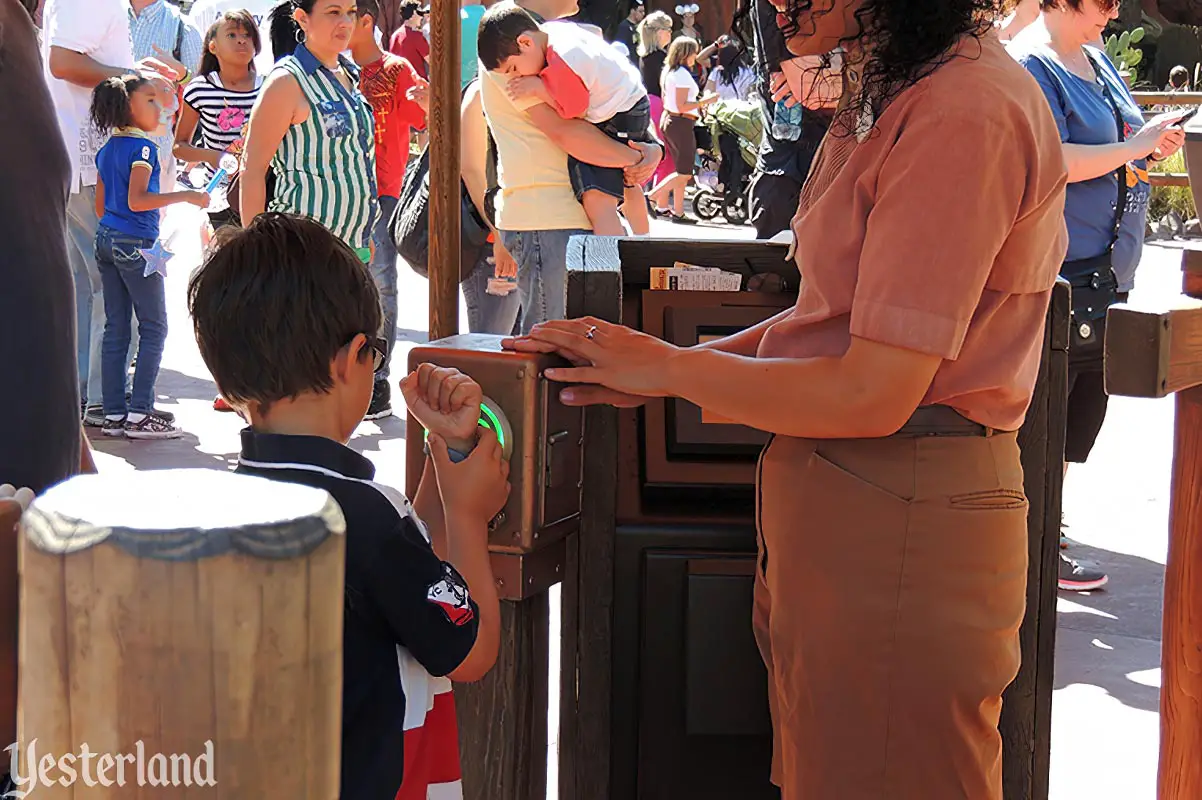
Photo by Werner Weiss, 2013 Hello MagicBand and hello FastPass+ |
|||
|
As 2013 was coming to an end, so was the paper FASTPASS system at Walt Disney World. The high-tech FastPass+ system replaced it in early 2014, after a transition period in late 2013 with both systems. The new system used RF-equipped ticket media and MagicBands to eliminate the little slips of paper. The separate FastPass queues and standby queues did not change, except for signage—but making only spontaneous, same-day choices at the attraction and getting paper tickets became things of the past. FastPass+ allowed on-site Walt Disney World resort guests to reserve attraction times up to 60 days out. Other guests could reserve 30 days out, so they were shut out from highly popular choices, such as Seven Dwarfs Mine Train and Avatar Flight of Passage—which routinely showed no availability at midnight Eastern time 30 days out. FastPass+ was a big improvement over FASTPASS in one regard. Disney’s official nomenclature for it did not use ALL CAPS. To make sure guests had plenty of choices, Disney added FastPass+ to attractions that didn’t need it, such as Journey Into Imagination With Figment. In July 2020, when the parks of Walt Disney World reopened at a reduced capacity after the four-month COVID-19 shutdown, they did so without FastPass+. The service was suspended until further notice. When 2020 ended, so did complimentary MagicBands for resort guests and annual passholders. FastPass+ never returned. In August 2021, Disney announced two new ways to avoid standby lines: Disney Genie+ and Individual Lightning Lane. With updated signs, the FastPass+ queues became Lightning Lane queues. Anyone who wanted to use them had to pay extra—above the already considerable price of Disney theme park tickets. Are Disney Genie+ and Individual Lightning Lane wondrous innovations in vacation planning or just expensive assaults on spontaneity and flexibility? |
|||
|
|
Click here to post comments at MiceChat about this article.
© 2022 Werner Weiss — Disclaimers, Copyright, and Trademarks Updated April 1, 2022 |
||